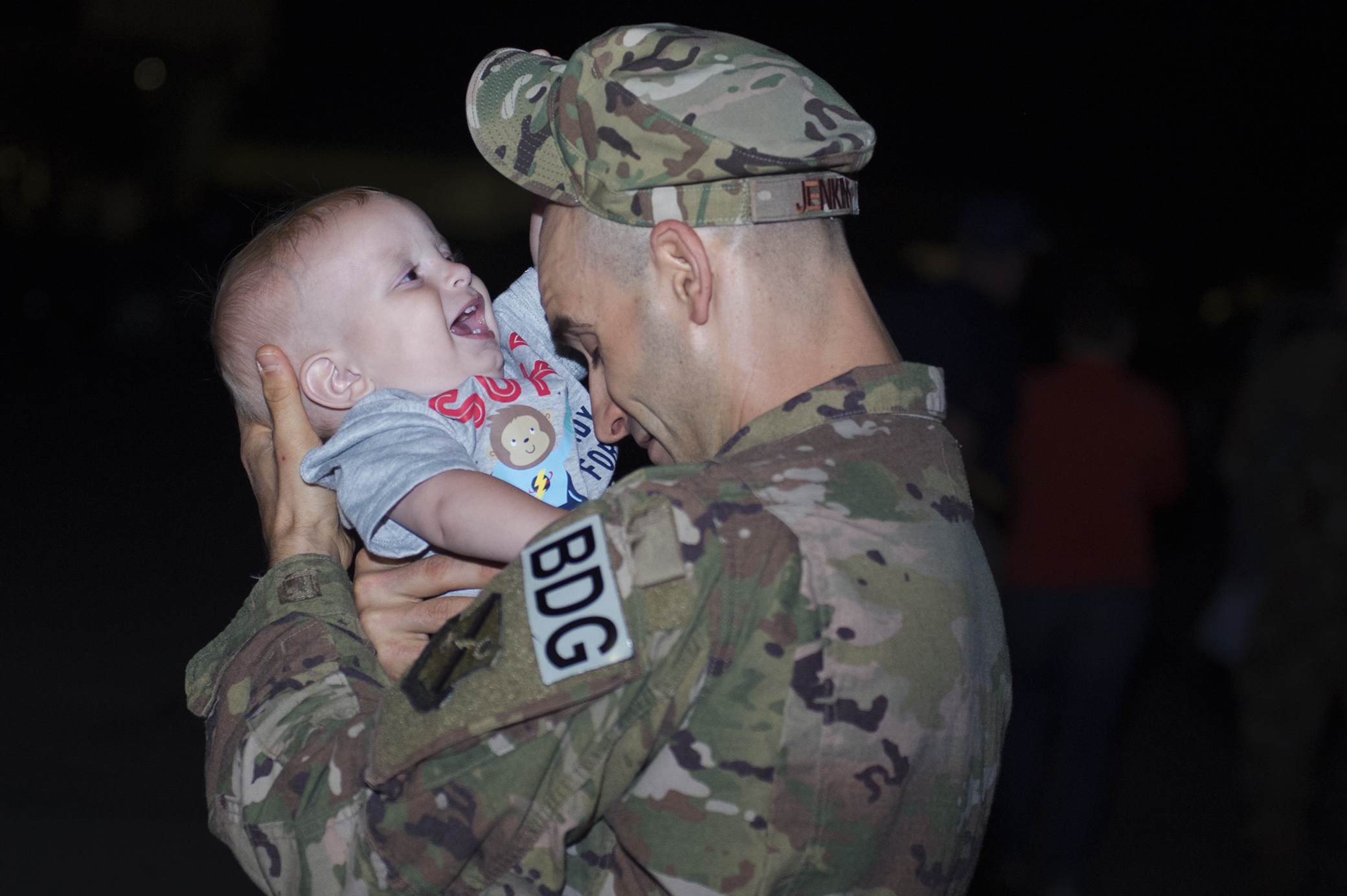Pre-Raven; Do You Have What It Takes?
By Senior Airman Jordyn Fetter,11th Wing Public Affairs, March 02, 2017
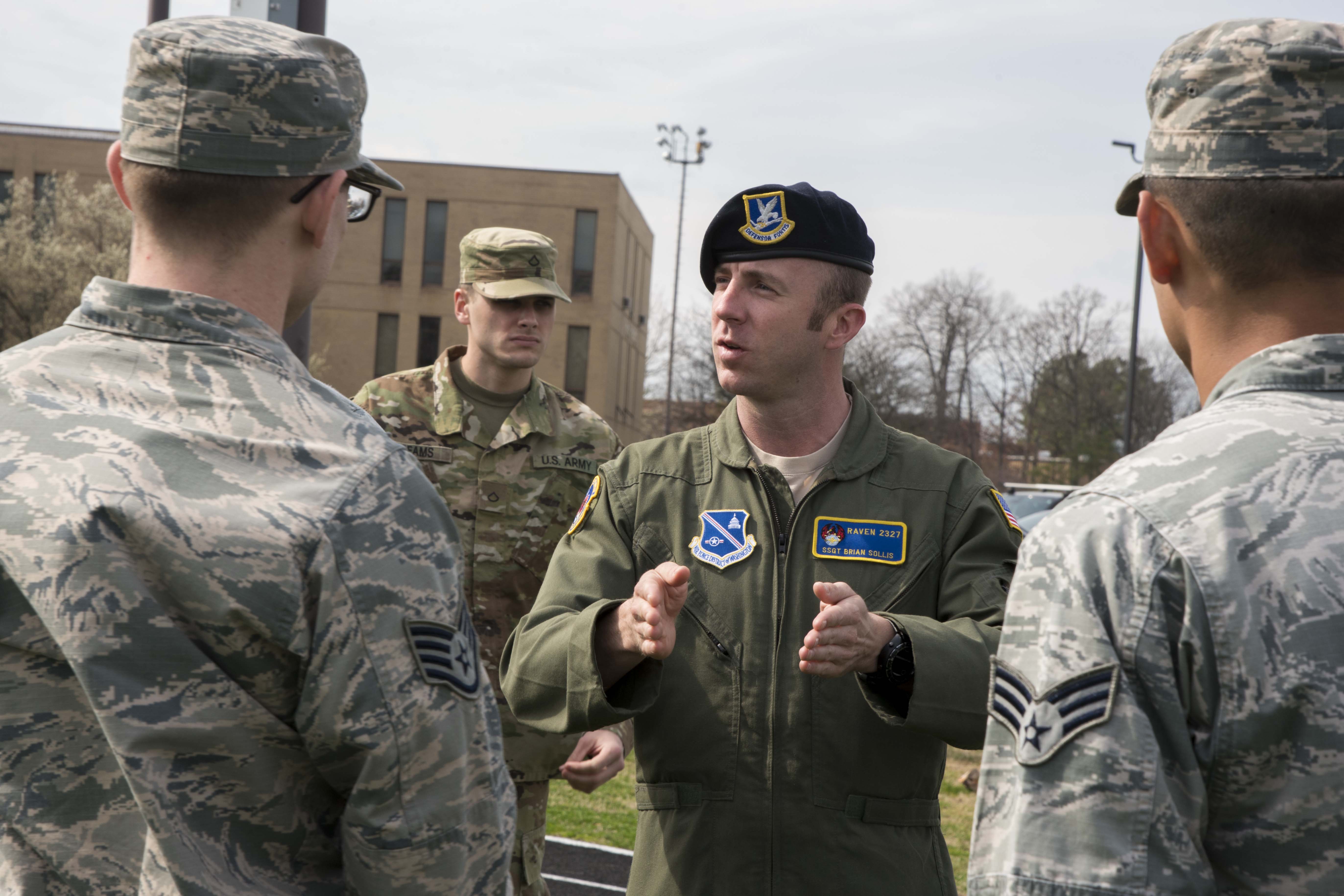
Staff Sgt. Brian Sollis, 811th Security Forces Squadron executive aircraft security NCO and instructor, gives directions during the Fly-Away Security Team training, nicknamed “Pre-Raven,” at Joint Base Andrews, Md., March 1, 2017. On this day, Pre-Raven trainees practiced verbal judo, which is an important skill for Ravens to use to deescalate a situation without the use of physical force. (U.S. Air Force photo by Airman 1st Class Valentina Lopez) (Photo by Senior Airman Jordyn Fetter)
JOINT BASE ANDREWS, Md. --
Battle cries pierce the air as 10 Army and Air Force security forces and military police members perform baton maneuvers in unison to the beat of their instructor’s orders.
These Airmen and Soldiers have taken the first step to becoming Fly-Away Security Team certified and possibly moving on to earning the title of “Phoenix Raven,” specially trained security forces personnel who provide aircraft security to Air Force assets across the globe at unsecure airfields.
From Feb. 13 to March 2, they’ve dedicated their time and efforts to completing the course, nicknamed “Pre-Raven.” The course is required of security forces or military police members aspiring to perform duties on fly-away missions at Joint Base Andrews.
“We want to know if they’re capable of completing the Raven mission under physical and mental pressure,” said Staff Sgt. Damien Hernandez, 811th Security Forces Squadron executive aircraft security member and instructor. “They have to be capable of doing it at the highest proficiency and be able to compete against those in our section.”
This quarterly-held course determines whether applicants are adept at the mission by preparing them for physical and mental tasks. Specific training curriculum includes coverage of teamwork, leadership, legal considerations, Redman qualification fights, baton maneuvers and verbal judo.
“We focus on the concept of teamwork, because something as simple as collapsible baton training has to be consistent so everyone is on the same page in regards to physical restraint,” Hernandez said. “If one person uses more force than necessary than the next person, there’s a huge lack in training and teamwork in there that shows that not everybody is on the same page.”
This overall theme of joint effort has slowly brought the team of trainees together and created a sense of unity between them.
“You could tell when we first got in there that everyone was apprehensive about working with one another, but we have since grown a brotherhood,” said Private First Class Micah Smith, 289th Police Company military police member and Fly-Away Security Team training participant. “The team bonding experience has just been amazing.”
Although the ultimate decision for who is accepted to the JBA program is made by the instructors here, some general prerequisites for attending the training include being either a security forces or military police member, receiving a 90 percent or above on the Air Force physical fitness test, have a record of good behavior, and receiving permission from their unit to participate.
Performance rating during Pre-Raven is scored based on a three-point system with the categories of participation, motivation and attitude.
For some participants, succeeding at this course is the start to living out one of their major career objectives.
“Becoming a Raven was my main drive coming out of technical school, so once I got here and made friends with some people in the Raven section, it really opened my eyes to how much I wanted to do this,” said Senior Airman William Schuld, 811th Security Forces Squadron area supervisor and Fly-Away Security Team training participant. “It’s not just a far-off goal anymore, it’s something I can do.”
The course provides development for military members in one of two ways: Army and Air Force participants can either earn a Fly-Away Security Team certification, which permits them to perform Raven-like duties at strictly JBA, whereas Air Force participants may advance to the official Raven school at Joint Base McGuire-Dix-Lakehurst, New Jersey, earning authorization to perform the unique mission throughout the world.
There are a limited number of slots available for the official Raven course each quarter, so some participants aren’t able to move forward, but still walk away with the JBA certification.
These Airmen and Soldiers made the choice to face the challenge of becoming part of the Fly-Away Security Team or Raven brotherhood, taking a leap toward their goal.
“I’m most looking forward to when this journey finally comes full circle for me,” Schuld said. “When all the screaming, push-ups and flutter kicks are over with, I’ll be able to look back at everything and say, ‘That was worth it.’”
U.S. Air Force Buying Special Drone-Snagging Shotgun Shells
SkyNet rounds are just one tool the Pentagon is looking at to counter the threat of small and readily available remote-control aircraft.
By Joseph TrevithickMarch 13, 2017, The Drive/The Warzone
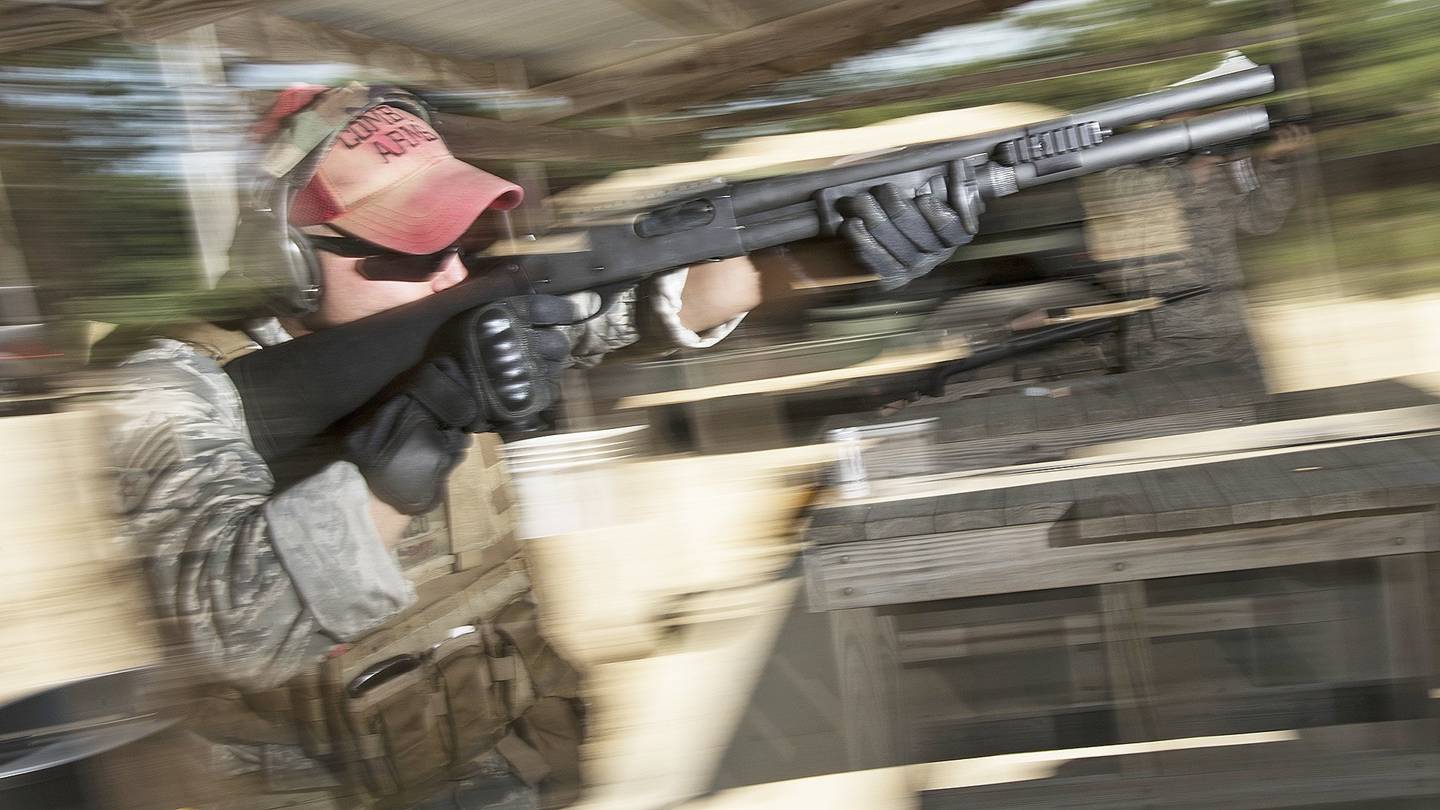
U.S. Air Force security forces, as well as other military personnel and federal law enforcement agencies, may soon be getting a new tool to take down small commercial drones: shotgun shells with a net. The special cartridge is just one system the Pentagon has been looking at to manage the growing threat from small and readily available quad-and hex-copter-type unmanned aircraft.
On Jan. 31, 2017, the Air Force Life Cycle Management Center (AFLCMC) announced plans to buy and evaluate 600 12 gauge SkyNet Mi-5 shells from AMTEC Less Lethal Systems (ALS). If the Air Force was happy with the tests’ results, the service would have the option of buying another 6,400 rounds.
According to a so-called ”justification and approval” document, the Pentagon’s Joint Rapid Acquisition Cell (JRAC) put the urgent request together in response to the potential danger the certain small flying machines posed “vital national security assets,” a phrase that commonly refers to nuclear weapons and their delivery systems. Government censors removed mention of the specific command that asked for the gear and its area of responsibility.
Any federal agency has to submit one of these formal justifications for any contract it wishes to award “sole source” to a specific company without a long and drawn out competition. AFLCMC subsequently took over the actual purchase process.
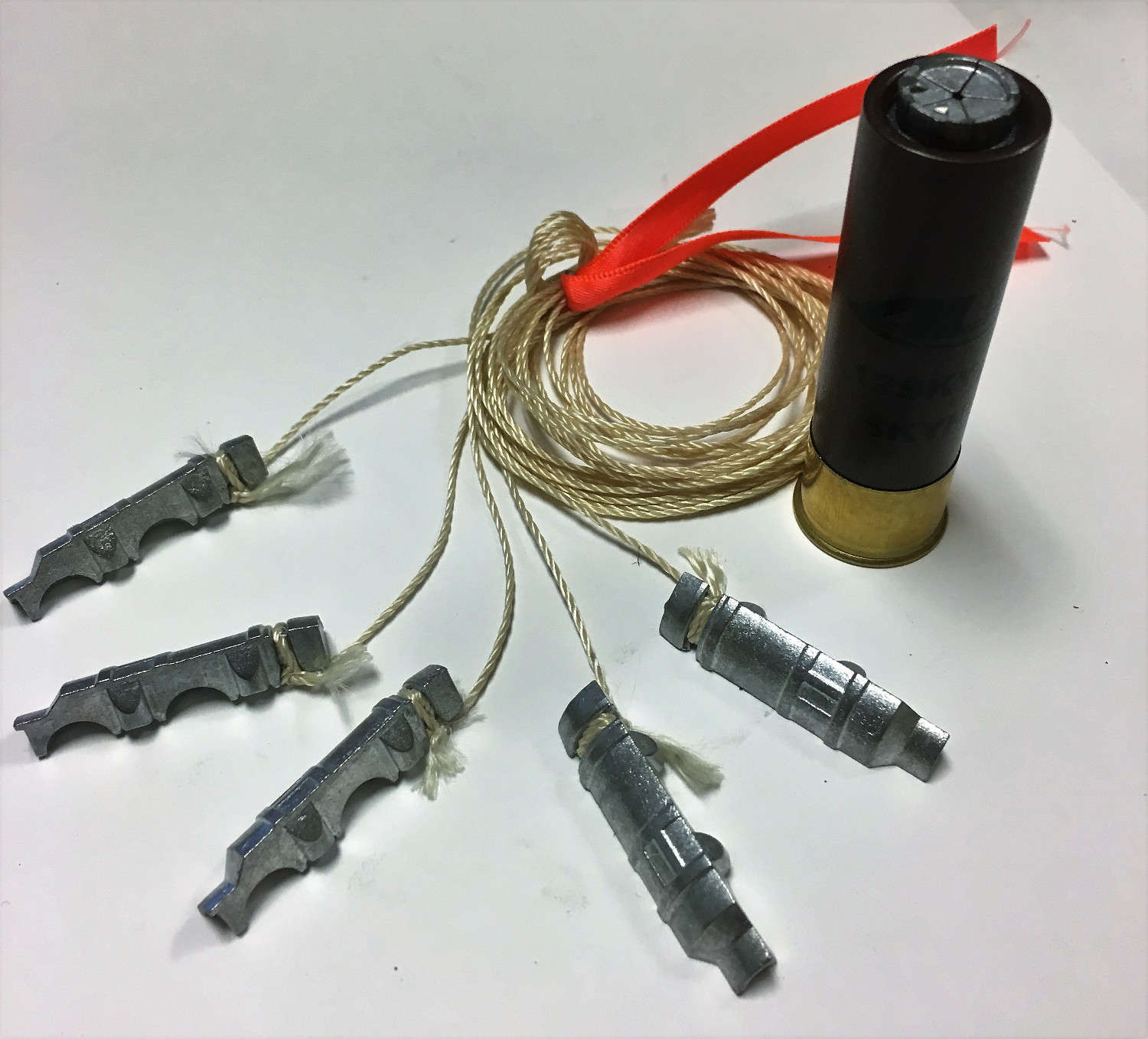
The components of the SkyNet Mi-5 next to a complete round.
The current technology set of net projectiles is a very immature market,” the contract review explained. “The Skynet Net Gun system has been demonstrated at several locations in varying conditions during testing as part of the 2016 Air Force Research Laboratory Commander's Challenge.”
Groups from around the Air Force and private contractors demonstrated various prototype and production systems during this event, which had the Latin motto in caleo exitium para – roughly translating to “prepare for hot destruction.” A team from Lackland Air Force Base went so far as to use a small wheeled drone to try and snag a quadcopter on the ground with a large net.
http://www.thedrive.com/the-war-zone/8291/u-s-air-force-buying-special-drone-snagging-shotgun-shells
“The most recent testing of the Skynet round occurred at Department of Energy Range 25 in Las Vegas, [New Mexico] in December 2016,” the justification report added.
Compared to other dedicated anti-drone weapons, the SkyNet Mi-5 is relatively simple. Each shell contains five metal segments, each connected by a high-strength cord to a central point. “The five tethered segments separate with centrifugal force and create a five foot wide ‘capture net’ to effectively trap the drone’s propellers causing it to fail,” ALS says on its website.
The Air Force said it will fire the projectiles from its standard Remington Model 870 shotguns. For the cartridge to work properly, Airmen will need to install “choke tube” with rifling to the gun’s muzzle to get SkyNet spinning. The contract options also included a possibility of purchasing 100 of these add-on devices.
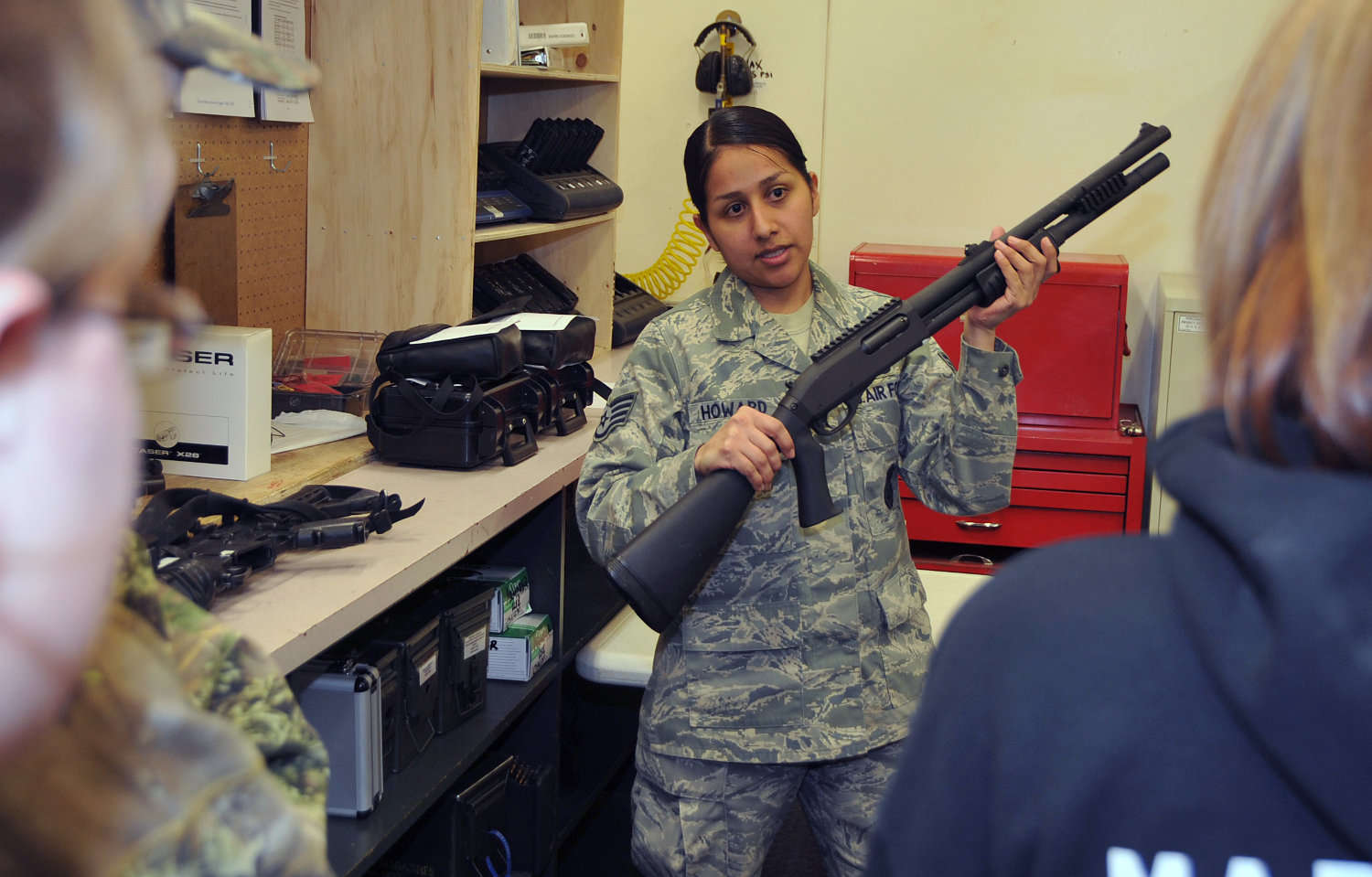
An airman holds a Remington Model 870 shotgun.
The Pentagon only wants the weapons to be able to handle remote-controlled aircraft in what it describes as Categories 1 and 2. The first group covers unmanned airplanes weighing less than 20 pounds and able to fly no more than 1,200 feet high. The second level includes drones between 20 and 55 pounds with the ability to reach altitudes of up to 3,500 feet. Drones in both categories generally wouldn’t be able to fly faster than 300 miles per hour.
In addition to SkyNet, there has been steady work across the Pentagon on other equipment to battle the tiny unmanned aircraft, ranging from hand-held and vehicle-mounted jammers to fast-firing chain guns to lasers. Unfortunately, the Pentagon appears to be generally relying on ad hoc urgent contracts to purchase these systems in lieu of a more comprehensive, long-term approach.
The Air Force posted the actual justification document on FedBizOps, the federal government’s main contracting website, just one day after Air Force Gen. John Hyten, head of U.S. Strategic Command (STRATCOM), told members of Congress that the Pentagon was still dragging its feet in setting up defenses against small unmanned aircraft broadly. “We’re going too slow,” Hyten declared on March 8, 2017.
“We have to get the right policies and authorities out there so our defenders know exactly what to do, and then we have to give them material solutions to allow them to react when they see a threat and identify that there is a threat so they do they right things,” the officer in charge of America’s nuclear deterrent continued. “It’s not enough for me to tell our guys to take a shotgun and shoot down something.”
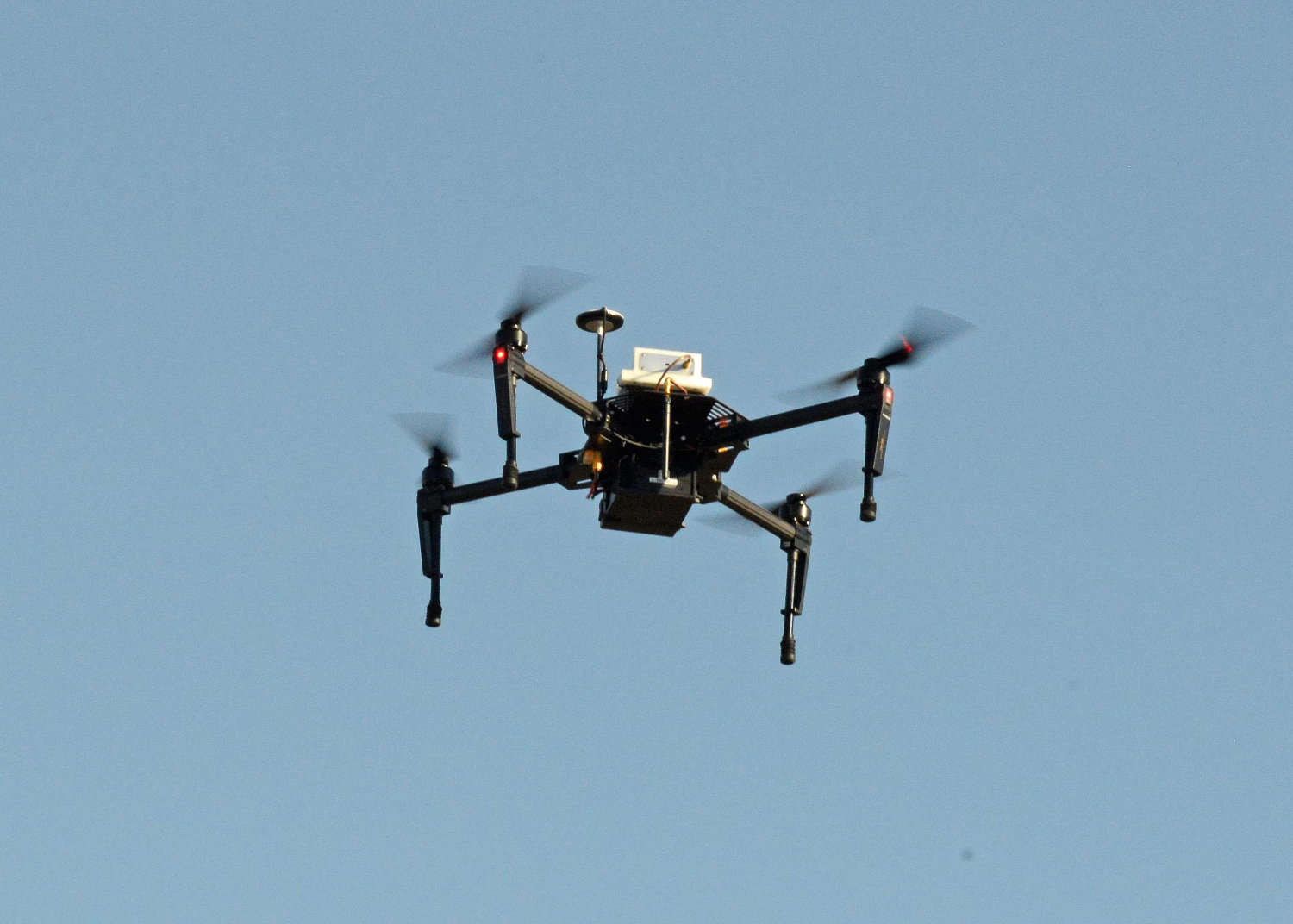
A quadcopter fitting the Pentagon's definition of a Category 1 or 2 drone.
There may also be concerns that projectiles might miss a drone and come down somewhere else, causing inadvertent damage or even casualties. This would be an especially serious concern for troops at sites situated near civilian communities. He went on to explain that his forces needed clear legal guidelines to go along with any new equipment, something civil aviation authorities have also struggled to develop in the face of rapidly improving technology.
Quadcopters and other tiny pilotless aircraft pose real dangers to both first responders and military personnel at home and abroad right now. In June 2016, firefighting helicopters battling a wild blaze in California had to briefly halt operations after a private drone entered the airspace. Four months earlier, U.S. Navy security personnel had spotted a small drone over the Kitsap-Bangor base, which is home to a number of nuclear-armed Ohio-class ballistic missile submarines.
More recently, Islamic State modified commercial unmanned systems so they could drop small bombs on government troops and civilians in Iraq and Syria. In January 2017, the terrorists released a video of them using the improvised arrangement to attack an Iraqi M1 Abrams tank. Potentially even more worrisome, the brutal group has used the drones to spy on their opponents, help artillery units adjust their fire and even film slick propaganda videos of suicide attacks.
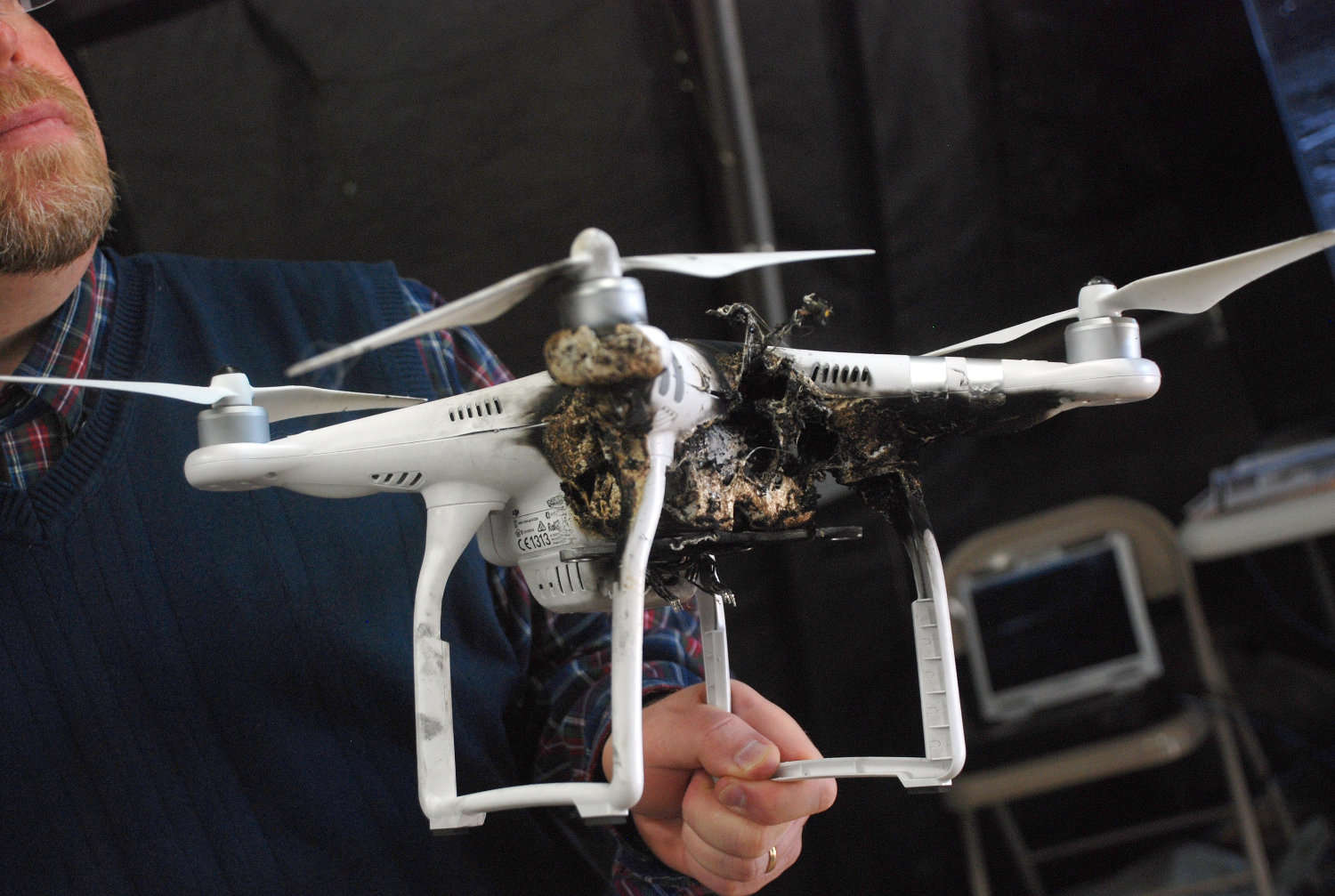
The remains a quadcopter the US Army destroyed with laser during a separate test.
In July 2016, the U.S. Army included an entire section on the threat and how to respond to it on the battlefield in a new training manual called Techniques for Combined Arms for Air Defense. Category 1 and 2 drones were among “the greatest challenges for Army forces,” the handbook explained.
If they prove successful, the net-filled shells will likely only be one component of a suite of future weapons for the rapidly expanding mission of counter-small unmanned aerial systems (C-UAS). Since 2016, multiple pictures have appeared on social media of American troops actually fielding rifle-like jamming sets in Iraq and Syria. For a wider layer and more automative form of defense, the Air Force itself has reportedly bought limited numbers of an Israeli "Drone Guard" system and Liteye's Anti-UAV Defense System (AUDS). On a higher-end of the spectrum, directed energy weapons and other counter-rocket, artillery and missile (C-RAM) like systems theoretically could make up the upper layer of area drone defense, but the Pentagon still has not fielded such a capability in a substantial and focused manner.
The SkyNet, and other systems in development, would definitely give Hyten’s security teams and other troops a safer option to take out tiny drones. However, it looks like the Pentagon's overall strategy still have to catch up with the times.
Airmen in Qatar Honor Fallen Military Working Dog's Handlers
By: Ashley Bunch, April 25, 2017, Air Force Times online (Photo Credit: Senior Airman Cynthia A. Innocent/U.S. Air Force)
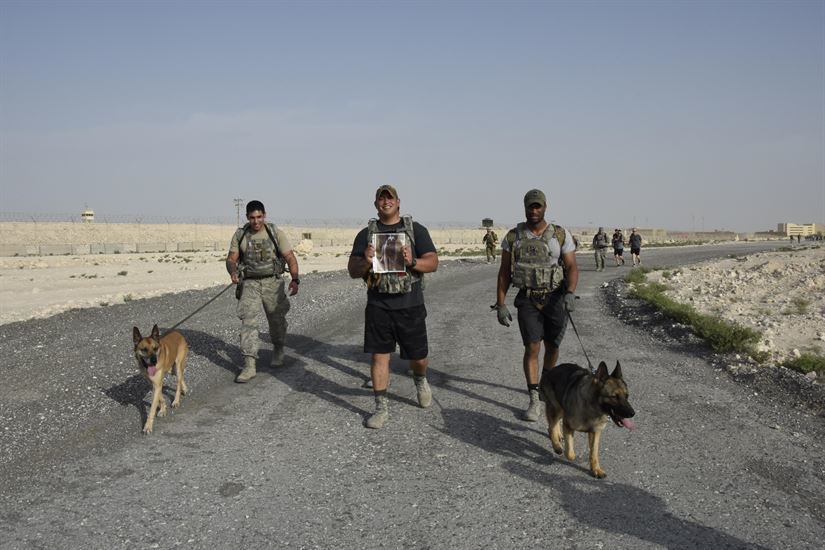
At Al Udeid Air Base in Qatar, U.S. airman commemorated fallen military working dogs and their handlers last week during a ceremony and three-mile ruck march with the 379th Expeditionary Security Forces Squadron, according to a DoD press release.
“Rucking is a great way to commemorate those who have given everything to their military service,” said Air Force Tech. Sgt. Jacop Parker, the unit’s kennel master. “It was challenging for both the handler wearing a 60-pound ruck sack and the dog running alongside their handler.”
“The dogs may be our wingmen, but they are different than a normal wingman,” said Air Force Senior Airman Noah Medor, a dog handler with the 379th Expeditionary Security Forces Squadron.
“Not everyone realizes that the dogs we train are not our pets. They are government assets, just like airmen. And because they are government assets, they are exposed to the same dangers we are, if not more,” Medor said.
More than 65 service members took part in the event.
820th Base Defense Group Celebrates 20 Years
MOODY AIR FORCE BASE, GA, UNITED STATES, 03.28.2017
Story by Airman 1st Class Lauren Sprunk, Moody Air Force Base
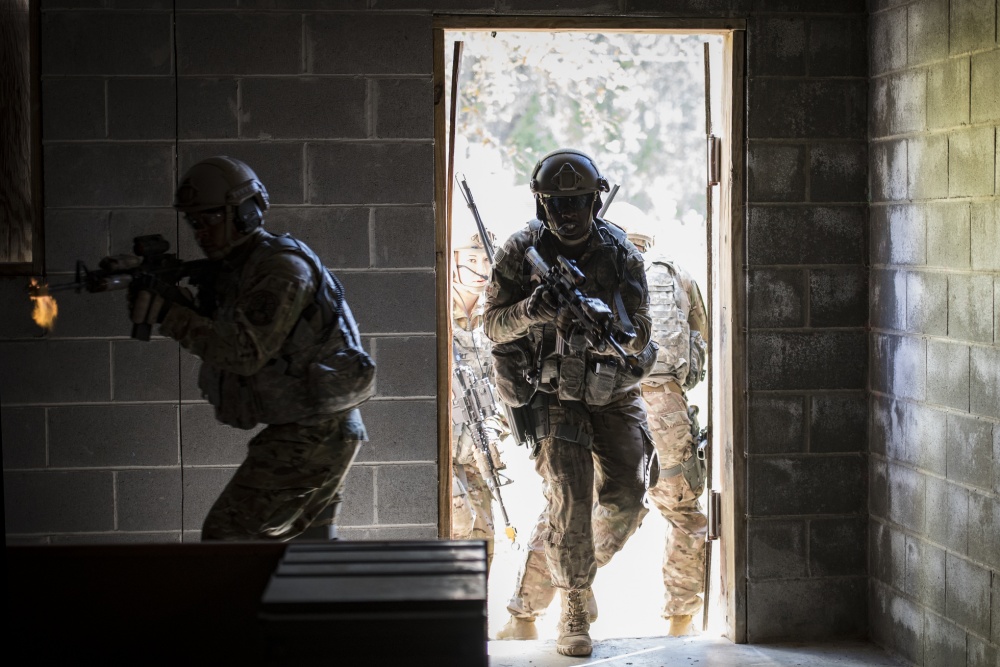
Photo By Airman 1st Class Lauren Sprunk | Airmen from the 820th Base Defense Group ambush a building during a tactical demonstration, March 27, 2017, at Moody Air Force Base, Ga. The demonstration was part of the 820th BDG anniversary, which commemorated 20 years since the activation of the 820th Base Defense Group, formerly known as the 820th Security Forces Squadron, and allowed guests to reminisce on their history, honor those they’ve lost, and walk through a tactical demonstration. (U.S. Air Force photo by Airman 1st Class Lauren M. Sprunk)
Moody’s defenders, past and present, and distinguished guests gathered, March 27 to 29, here, to celebrate the anniversary of the only active duty Air Force base defense group.
The anniversary commemorated 20 years since the activation of the 820th Base Defense Group, formerly known as the 820th Security Forces Squadron, and allowed guests to reminisce on their history, honor those they’ve lost, and walk through a tactical demonstration.
“One of the things that makes the 820th so unique is the desire that its members have to come back and serve or just to come back and visit,” said Col. Kevin Walker, 820th BDG Commander. “It’s unlike any other group I’ve ever seen. Our Airmen have grown a bond that in many regards is stronger than family.
“I hope [that during this reunion,] those that are 820th alumni are able to find pride in seeing and interacting with the group that they’ve helped build.”
Attendees began the celebration with an opening ceremony where retired Brig. Gen. Richard Coleman explained how he transformed what started as an idea written down on a bar napkin into the first ever base defense group.
From there, guests went to a wreath laying ceremony where they honored the lives of the four Airmen they have lost since the group’s inception: Airman 1st Class Leebernard Chavis, Staff Sgt. Todd Lobraico Jr., Tech. Sgt. Joseph Lemm and Staff Sgt. Louis Bonacasa.
“[These Airmen] laid down their lives because they believed that everyone else’s tomorrows are worth more than their todays,” said Walker. “[For that,] we honor them for their courage, for their sacrifice, and for the American, the Airman and the defender that they are.”
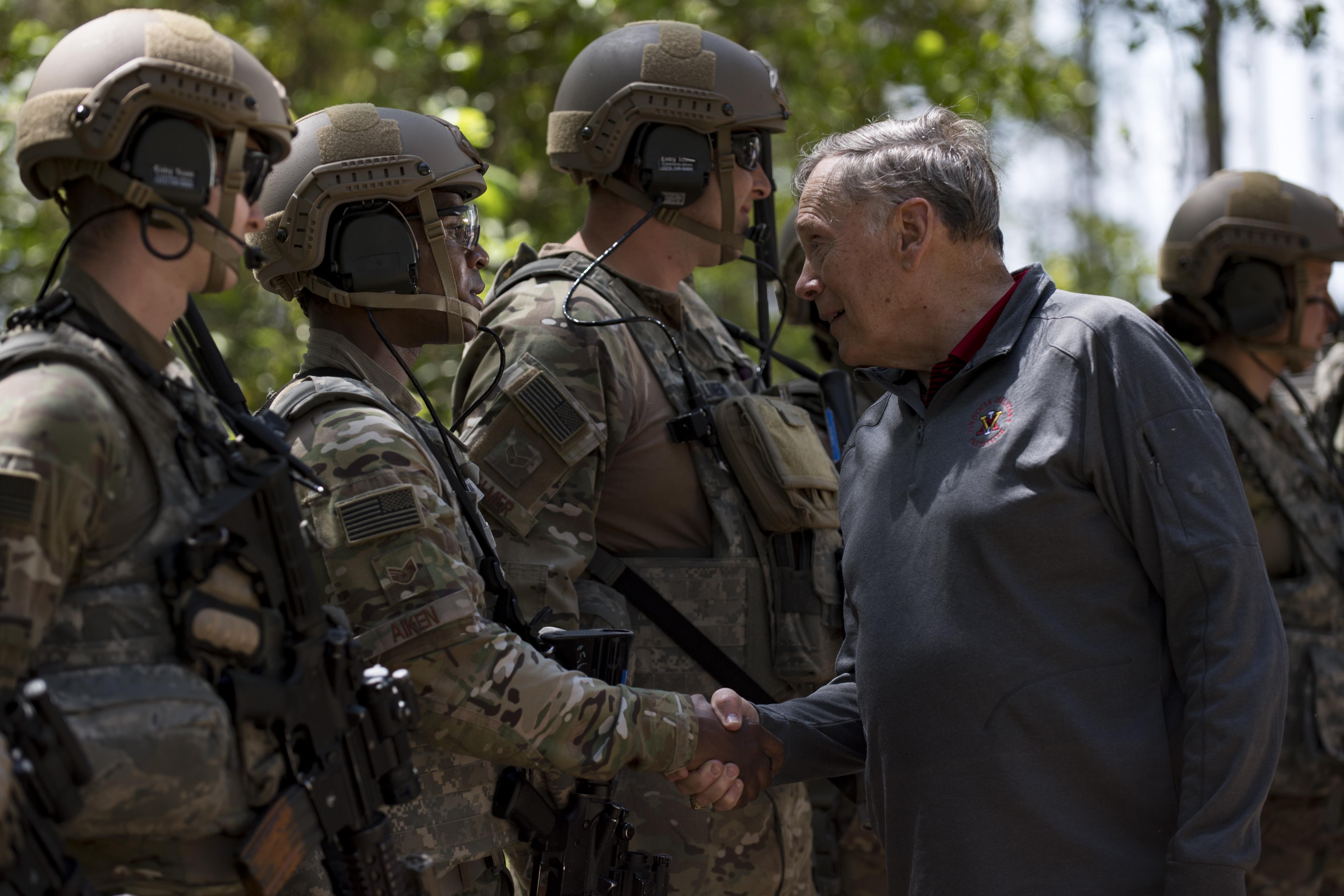
After the ceremony, the 820th BDG recognized distinguished guest and former Chief of Staff of the Air Force, retired Gen. John Jumper, by dedicating a conference room in honor of him. Jumper also re-enlisted Staff Sgt. Scott Shirley, 824th Base Defense Squadron NCO in charge of plans and programs.
Guests ended their day by watching a tactical demonstration where 820th BDG Airmen showcased their strategies, weapons and ability to work as a team with each section that makes up the 820th BDG.
“The BDG composition consists of a headquarters element, a Combat Operations Squadron, and three operational squadrons that can be tailored to meet the mission’s need,” said Senior Master Sgt. Justin Geers, 824th Base Defense Squadron operations superintendent. “The 820th continues to evolve to fulfill the integrated base defense mission, as its predecessor, the combat security police of the Vietnam era, did.”
The tactics of the 820th BDG began in South Vietnam when highly successful guerrilla attacks compelled the Air Force to transform the standard practice of airbase ground defense into an aggressive defense force capable of detecting and stopping attacks on the base from outside the wire. Designated Operation SAFESIDE, the new initiative required new techniques to create the “active defense” concept which proved to be successful.
The SAFESIDE legacy returned with the activation of 820th Security Forces Group. The Group was activated on March, 17, 1997.
In the beginning, the group had difficulty finding the manpower needed to form the assigned squadrons of the 820th SFG. The group had seven flights scattered around the country who would come together to form a squadron when the Headquarters teams deployed for contingencies.
“From March 1997, the group and its seven geographically separated flights trained and became operational,” said Geers. “On August 1, 1999, Detachment 1, 820th SFG stood up at Moody to plan and execute the moves of the group Headquarters staff from Lackland Air Force Base, Texas, and to bed down and build three new squadrons.
“On March 14, 2001, the official stand up of the group occurred at Moody and the group moved to Air Combat Command.”
Today, the 820th Base Defense Group provides planning, training, equipping and preparation of three security forces squadrons. They are the only global ‘first-in’ force protection unit to provide fully-integrated, highly capable and responsive forces to protect overseas contingency operations around the globe at a moment’s notice.
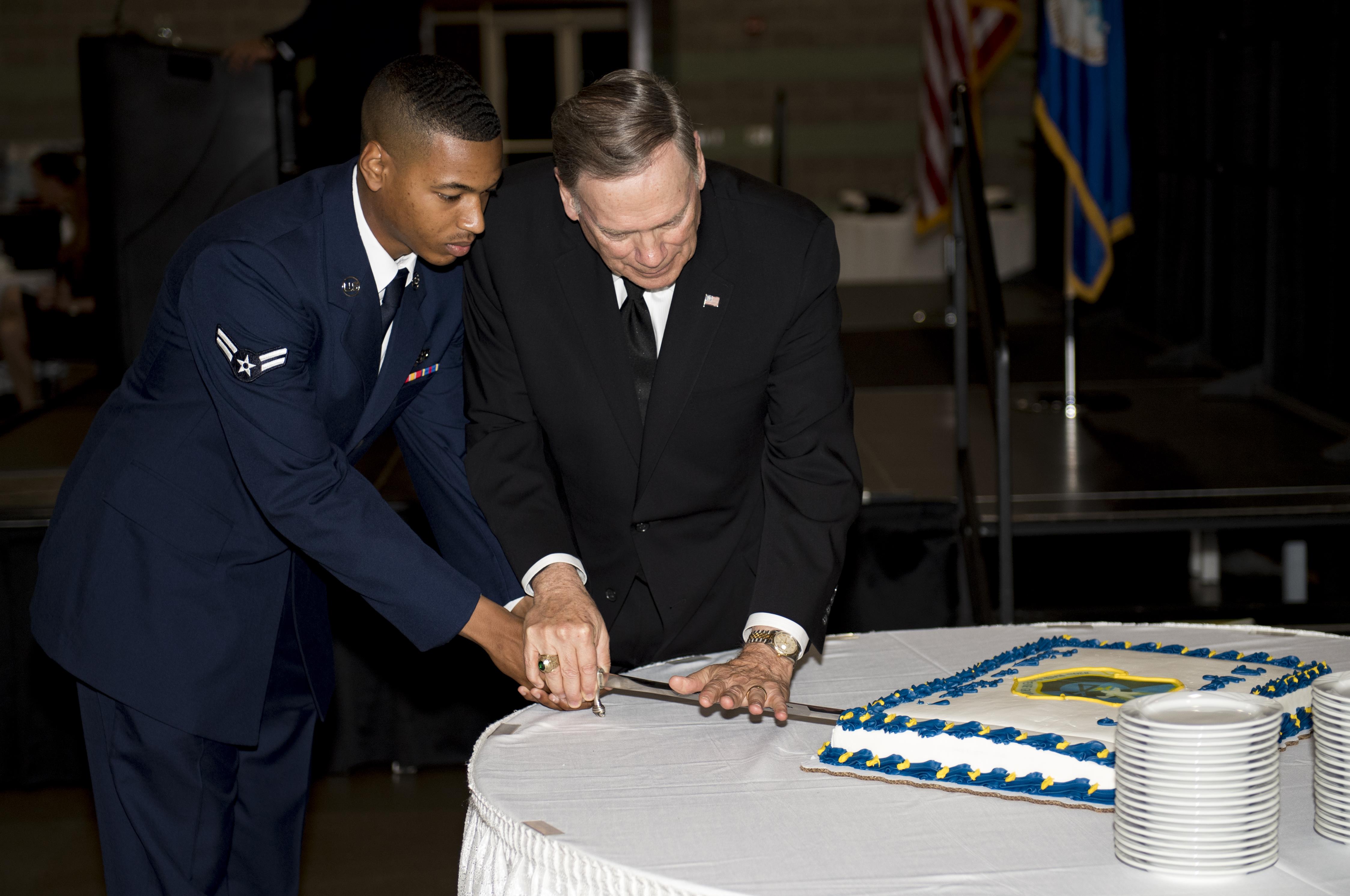
“[This reunion allows] attendees to hear and see the past, present and future of the BDG,” said Walker. “They will see how the action of the past has created today’s BDG and how today’s BDG is preparing the way and setting the road for tomorrow’s BDG.”
Ghostwalkers' Gear Up for SW Asia
By Airman 1st Class Greg Nash, 23d Wing Public Affairs / Published April 13, 2017
Staff Sgt. Jonathan Jenkins, 824th Base Defense Squadron squad leader, plays with his son prior to deploying, April 11, 2017, at Moody Air Force Base, Ga. More than 100 Airmen from the 824th BDS, known as the ‘Ghostwalkers,’deployed to Southwest Asia to provide fully-integrated, highly capable and responsive forces while safeguarding Expeditionary Air Force assets. (U.S. Air Force photo by Airman 1st Class Greg Nash)
MOODY AIR FORCE BASE, Ga. -- More than 100 Airmen from Moody's 824th Base Defense Squadron, known as the ‘Ghostwalkers,’ deployed to Southwest Asia to provide fully-integrated, highly capable and responsive forces while safeguarding Expeditionary Air Force assets.
The 824th BDS is a part of the 93rd Air Ground Operations Wing which provides highly trained ground combat forces and are capable of integrating air and space power into the ground scheme of fire and maneuver.
Their members conduct offensive and defensive ground combat operations worldwide to protect expeditionary aerospace forces with an airborne capability.
Page 35 of 50
